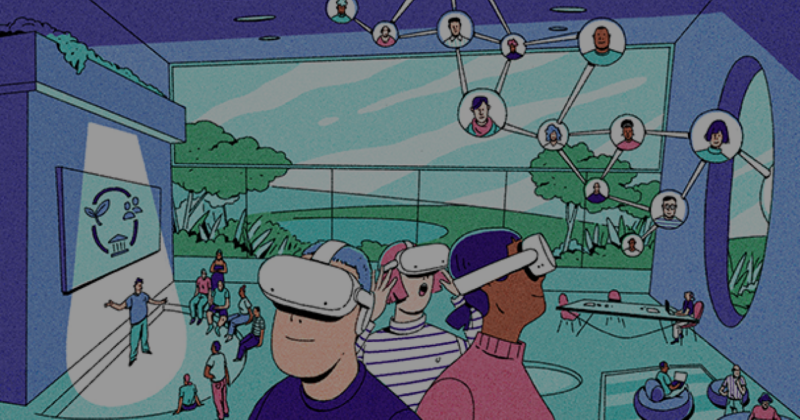
4 Offer Stage Strategies to Win Top Candidates
 Getting a candidate to the offer stage
Getting a candidate to the offer stage You’ve run a seamless process. Your hiring manager and interview team have all given the green light to a candidate. Now it’s time to close in an offer stage. This is the moment that matters. It’s also the point in the process where a recruiter can either be an administrator or position themselves as a strategic partner who plays a key role in ensuring the candidate accepts.
Too many recruiters make the mistake of assuming that getting to the offer stage means they’ve already crossed the finish line. On the contrary, this is arguably the final, most crucial lap of the race and there is work to be done. Here are a few examples.
1. Sell the value of equityAs a strategic partner during the offer stage when equity is on the table, it’s important to avoid simply regurgitating numbers that you’ve been given by your finance team. Take the time to truly understand the numbers and what you can share with the candidate and help them understand the value of the equity offered. This means going beyond simply talking about vesting cycles, cliffs, and strike prices, and actually gathering the information necessary to speak to the anticipated equity value in different business scenarios over the next few years.
2. Tag team the offer stage callTwo is better than one in this scenario. The hiring manager should be present during the call to answer outstanding questions about things like near-term projects and the onboarding process and to address any concerns the candidate may have about the opportunity.
Encourage the hiring managers to discuss career growth within the role and why the team is excited for this person to come on board. This is an opportunity for your team to show that you’ve been listening during the interview process and you can offer the candidate what they’re looking for in their next role.
Every candidate has a unique set of motivations. While one might be driven by a high salary, another might value work-life balance above all else. Your offer should address their specific ‘why’. Help the candidate visualize their future in the company.
3. Don’t start with your lowest salary targetThe job market is still competitive for top talent and specific roles. If you have a candidate at the offer stage, that likely means you’ve put them through an extensive vetting and interview process, so don’t risk losing them by giving them a lowball offer with the expectation that they will counter.
As a best practice, present the strongest offer possible and offer insight into how you got to that number. It’s impactful for them to understand that you’ve taken the time to consider the value they’ll be adding, the responsibilities they will have in the role, and their prior experience. This stage of the process sets the precedence for the candidate’s future at the company and a foundation for a relationship that’s built on transparency and respect.
While a competitive salary is an essential factor for most candidates, equally critical are the accompanying benefits. This could include health insurance, retirement plans, professional development opportunities, and even work-from-home options. Performance bonuses, signing bonuses, and stock options can sweeten the deal for top-tier talent. These extras can be the differentiating factor if a candidate is choosing between two similar offers.
Related: 2023 State of Tech Salaries report, 2022 State of Tech Salaries report
How Ejento improved its offer stage acceptance rate:
Ejento’s Principal, Alex Klein explains, “It’s a number of things… Our total rewards leader was instrumental in this. She did an amazing job of getting leadership to buy in on things we needed to be competitive. Some of it was a natural maturation process of the company. As you become a more mature company, the value proposition changes… We’ve done a great job of increasing our cash compensation and corporate bonuses to become more competitive… while also improving benefits… Our recruiting team is continuing to improve. Combine all of that and it drove our offer acceptance increased substantially.”
Listen to the full Talk Talent to Me episode.
4. Get to a “yes”Your mission before ending the offer conversation is to earn a verbal commitment from the candidate. If there are hesitations or competing offers in play, engage in a dialogue to uncover what may be missing from your offer. Establish dialogue and find out candidate what would make them more comfortable with making a decision before hanging up the phone.
You should ask questions to find out where the candidate’s head is at, but avoid seeming pushy. If the candidate seems indecisive and closed off, create a sense of urgency and work with him or her to set a timeline for when they can realistically respond to your offer.
The best recruiters know their job is not simply to get candidates in the door and fill a pipeline, but actually to ensure that all of that work culminates in a “yes.” The key to success at this stage is knowing that it is an intense and sometimes emotional experience for both sides, and your job is to help everyone get to a decision they feel good about. This takes patience, experience, and a healthy dose of EQ, but if done right, it can be one of the most rewarding parts of the job.
Need to revamp your hiring process?If your hiring has slowed and you have the time or you’re busy but seem to come up short, Hired’s team can help. Our customer success managers take a personal interest in your experience, including offering audits and guidance on hiring funnels and processes. Would you like to shave off time while assessing candidates to reduce your cost of vacancy? Hired offers virtual candidate events and campaigns including coding challenges personalized to your needs.
See how tech employers such as Chase, Bark, Wayfair, AND Digital, Dropbox, G-Research, and Citi used events to amplify their employer branding, connect with new talent pools, and zero in on specific tech skills.
Originally published May 2017. Updated by the Hired Content Team August 2023.
Related blog posts

How to Support Internal Candidates When They Don’t Get the Job
Internal Mobility and Professional Growth are Key Retention Tools Good companies strive to...

Talent Acquisition Week Edition: Talk Talent to Me Feb ’23 Recap
Catch up on the February 2023 episodes of Hired’s Talk Talent to Me podcast featuring...

2023 Survey Results: Top 3 Benefits Ranked by Engineers (Besides Salary)
From layoffs, hiring freezes, inflation, and the explosion of AI, we’ve seen significant shifts in...

8 Ways to Hire Faster & Build a Better Employer Brand
What You’ll Learn How to fill positions more efficiently through tools, templates, and...

Hiring Tech Talent is Tough. Here’s Why (and What to Do About it)
Pandemics change things. They are the cultural equivalent of an apocalypse, and while we can...

How Smart Companies are Solving Post-Lockdown Working (4 New Trends)
From ‘swarm teams’ to the metaverse, innovative ideas take on the challenges of the new world...


